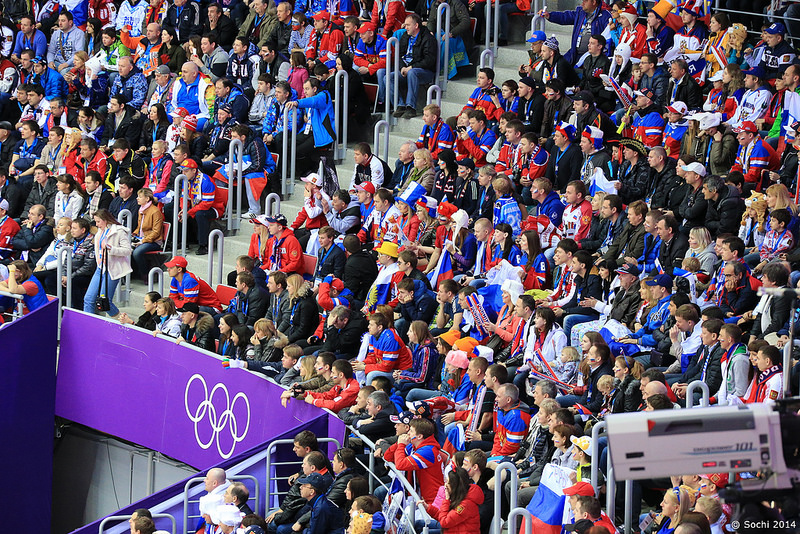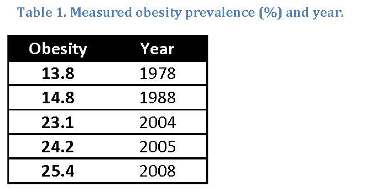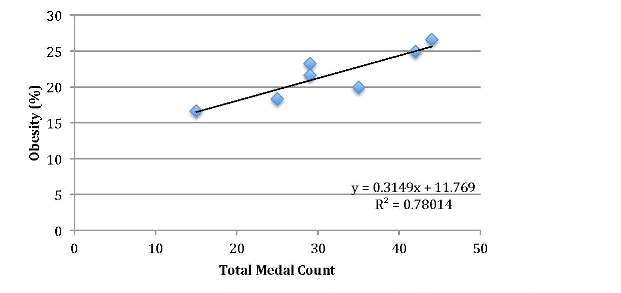
Watching is easier than doing // Photo: Sochi 2014 Flickr
Is there a relationship between Olympic performance and population obesity?
Days before the Olympic Games begun in Sochi, Russia, Dean Kriellaars, an associate professor in the department of physical therapy at the University of Manitoba, released a discussion paper to spur debate. “Canada, a spectator society: Is there a relationship between Olympic performance and population obesity?” is republished below.
One often hears that Olympic Games spur on a Nation to become more physically active. However, when looking at the relationship between the prevalence of obesity and Olympic performance one is led to a different conclusion.
Figure 1 below plots the prevalence of obesity and Olympic medals won by Canada at the Summer and Winter Olympic Games combined. This figure reveals little indication that Canada’s Olympic performance has inspired the population to become active. Some actually argue that sporting events such as Olympics have contributed to creating a spectator society which would seem to fit with the amount of time we spend in front of screens of one form or another. One need only to look at the local sports bar to view spectatorship in action, complete with over-‐consumption of food and excessive consumption of alcohol.
Figure 1. The prevalence of obesity (blue diamonds) and the combined summer and winter medal count (squares) is plotted annually.
The measured obesity prevalence was used to create a regression equation (y=0.4144x-‐ 807.18, r=0.977) for estimation of prevalence of obesity values used in Figure 1. The measured obesity prevalence is listed in the table below and derived from the 2011 report entitled “Obesity in Canada: A joint report from the Public Health Agency of Canada and the Canadian Institute for Health Research”. The self-‐reported data was ignored, as a strong systematic bias of under-‐representing obesity is present.
The total medal count was obtained from the Wikipedia page.The summer and winter medals were summed per year up to 1992, after this the medal counts were combined in each quadrennial (as the winter and summer Olympics were offset by 2 years after 1992).
The strong association (r=0.88) between medal count and obesity is illustrated in the scatter plot below.
Figure 2. Scatterplot of the obesity prevalence and medal count between 1988 and 2012. The best fit line is shown.
Interestingly, this relationship persists back to the 1972 Olympics, but the strength somewhat weakens (r=0.7) due to an aberrant amount of medals for Canada at the LA Olympics (Figure 3). If the LA data is deleted, the r increases to 0.97 – an almost perfect relationship.
Figure 3. Obesity prevalence and Olympic medal count from 1972 to 2012. The LA Olympics had an aberrant increase in medals (48 medals). Best fit line shown including LA data.
Of interest, is the fact the increase in total medal count over the years can largely (almost entirely) be explained by the increase in the number of events at each Games (data not shown). In other words, we continue to get our fair share of medals. This further highlights the notion, that we are creating a highly disparate culture of the few that are active and an increasing majority that is inactive. Of course, an association between medal count and obesity does not indicate that it is a casual relationship, that “the Olympics is the cause of obesity”. It simply highlights that, despite continued Olympic success, this has not resulted in a reduction of obesity by spurring on a nation of people with active lifestyles. We are truly a spectator society.
About the author
Dean Kriellaars is a faculty member the Department of Physical Therapy. He is a scientist of the Manitoba Institute of Child Health. His research is directed to physical literacy, physical activity, and obesity. Dr. Kriellaars has been awarded national and international awards for scientific research and innovation. Dr. Kriellaars has received two University of Manitoba Presidential Outreach awards for meritorious community work, and recently was awarded the Campbell Award for longstanding community service. He was recently awarded the MPETA builder award for outstanding dedication and promotion of health and physical education in Manitoba. He works with Canadian Sport for Life, PHE Canada, the Sport Medicine and Science Council of Manitoba, Cirque du Soleil and the National Circus School, as well as the RCMP on community wellness initiatives.
Research at the University of Manitoba is partially supported by funding from the Government of Canada Research Support Fund.











Nice article Dean Kriellaars.